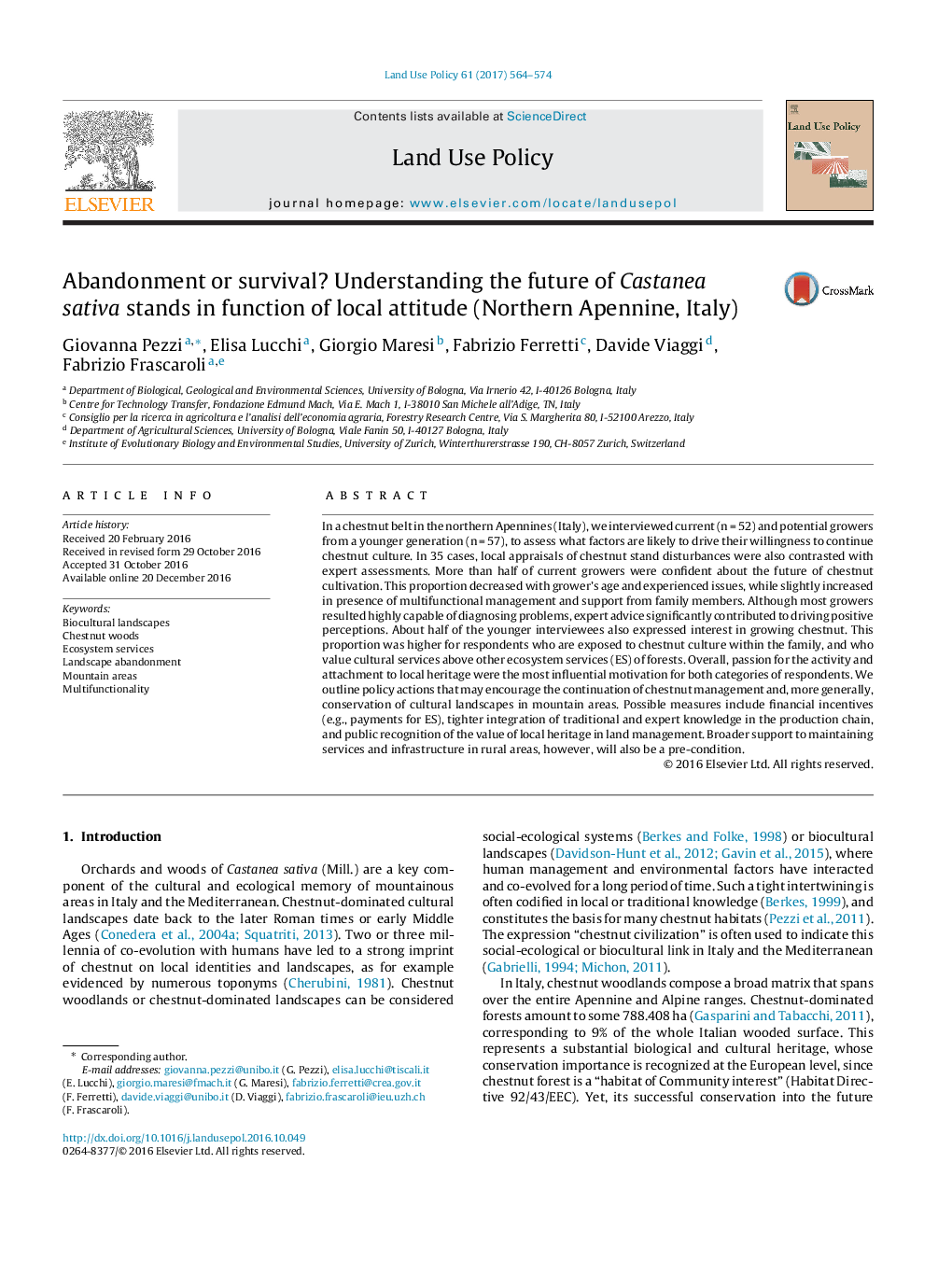| Article ID | Journal | Published Year | Pages | File Type |
|---|---|---|---|---|
| 6461362 | Land Use Policy | 2017 | 11 Pages |
â¢Present and potential growers were interviewed about the future of chestnut stands.â¢Growers' views on stand health were compared to expert field assessments.â¢Tradition, family heritage, and “passion” were the main drivers for both categories of respondents.â¢Economic motivations were secondary for both categories respondents.â¢New policy instruments are required to support chestnut culture into the future.
In a chestnut belt in the northern Apennines (Italy), we interviewed current (n = 52) and potential growers from a younger generation (n = 57), to assess what factors are likely to drive their willingness to continue chestnut culture. In 35 cases, local appraisals of chestnut stand disturbances were also contrasted with expert assessments. More than half of current growers were confident about the future of chestnut cultivation. This proportion decreased with grower's age and experienced issues, while slightly increased in presence of multifunctional management and support from family members. Although most growers resulted highly capable of diagnosing problems, expert advice significantly contributed to driving positive perceptions. About half of the younger interviewees also expressed interest in growing chestnut. This proportion was higher for respondents who are exposed to chestnut culture within the family, and who value cultural services above other ecosystem services (ES) of forests. Overall, passion for the activity and attachment to local heritage were the most influential motivation for both categories of respondents. We outline policy actions that may encourage the continuation of chestnut management and, more generally, conservation of cultural landscapes in mountain areas. Possible measures include financial incentives (e.g., payments for ES), tighter integration of traditional and expert knowledge in the production chain, and public recognition of the value of local heritage in land management. Broader support to maintaining services and infrastructure in rural areas, however, will also be a pre-condition.
